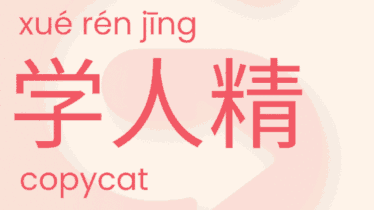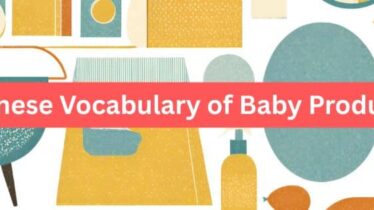Essential Chinese Tableware Vocabulary
When learning Mandarin Chinese, understanding vocabulary related to daily activities like eating makes your language skills more practical. Tableware vocabulary (餐具词汇, cānjù cíhuì) is particularly important since meals are central to Chinese culture and social interactions.
Understanding Chinese Tableware Culture
In Chinese culture, meals are traditionally served with specific tableware that differs from Western dining customs. Rather than individual place settings, Chinese dining typically involves shared dishes placed in the center of the table, with everyone using their own rice bowl and chopsticks to take food from the communal plates.
The tableware used reflects thousands of years of cultural development, from ancient bronze vessels to delicate porcelain. Learning these terms not only helps you navigate a Chinese restaurant or home-cooked meal but also offers insight into Chinese cultural values.
Essential Chinese Tableware Items (基本餐具, jīběn cānjù)
Bowl (碗, wǎn)
The humble bowl is perhaps the most fundamental piece of Chinese tableware. Unlike Western dining where plates dominate, Chinese meals center around the bowl, particularly for rice and noodles.
- Rice bowl (饭碗, fàn wǎn) – Typically smaller and deeper than Western soup bowls
- Soup bowl (汤碗, tāng wǎn) – Larger than rice bowls with a wider opening
- Small bowl (小碗, xiǎo wǎn) – Used for individual portions of dishes or condiments
- Large bowl (大碗, dà wǎn) – Used for serving family-style dishes
Plate (盘子, pánzi)
While less central than bowls, plates serve important functions in Chinese dining:
- Round plate (圆盘, yuán pán) – Common for serving shared dishes
- Rectangular plate (长方盘, chángfāng pán) – Often used for cold appetizers or fish dishes
- Small plate (小盘, xiǎo pán) – Used for individual portions or as saucers
- Large serving plate (大盘, dà pán) – For main dishes shared by everyone at the table
Chopsticks (筷子, kuàizi)
The quintessential Chinese eating utensil, chopsticks have been used for over 3,000 years and require some practice to master.
- Wooden chopsticks (木筷, mù kuài) – Traditional and common for everyday use
- Bamboo chopsticks (竹筷, zhú kuài) – Lightweight and environmentally friendly
- Plastic chopsticks (塑料筷, sùliào kuài) – Durable and often used in casual restaurants
- Metal chopsticks (金属筷, jīnshǔ kuài) – Less common in mainland China, more popular in Korea
- Serving chopsticks (公筷, gōng kuài) – Larger chopsticks used to serve from shared dishes, a hygienic practice
Spoon (勺子, sháozi)
Chinese spoons differ notably from Western ones:
- Soup spoon (汤匙, tāng chí) – Typically ceramic or plastic with a flat bottom and deeper bowl
- Rice spoon (饭勺, fàn sháo) – Larger, often wooden or plastic, used for serving rice
- Small spoon (小勺, xiǎo sháo) – Used for condiments or desserts
Cup and Glass (杯子, bēizi)
Various drinking vessels for different beverages:
- Tea cup (茶杯, chá bēi) – Small cups without handles, traditionally made of porcelain
- Water glass (水杯, shuǐ bēi) – Standard drinking glass for water
- Wine cup (酒杯, jiǔ bēi) – Small cup for Chinese rice wine or báijiǔ
- Mug (马克杯, mǎkè bēi) – Western-style cup with handle
Specialized Chinese Tableware
Tea Set (茶具, chájù)
Tea culture has its own specialized equipment:
- Teapot (茶壶, cháhú) – For brewing tea
- Tea pitcher (公道杯, gōngdào bēi) – Used to ensure equal flavor distribution before serving
- Tea tray (茶盘, chá pán) – Contains spills during traditional tea ceremony
- Tea strainer (茶漏, chá lòu) – For filtering tea leaves
Hot Pot Accessories (火锅用具, huǒguō yòngjù)
Hot pot dining requires specific tableware:
- Hot pot (火锅, huǒguō) – The divided pot for cooking
- Soup ladle (汤勺, tāng sháo) – For serving broth
- Slotted spoon (漏勺, lòu sháo) – For retrieving cooked items
- Dipping sauce plate (蘸料碟, zhàn liào dié) – Small dish for individual dipping sauces
Other Important Items
- Sauce dish (调味碟, tiáowèi dié) – Small dish for soy sauce or other condiments
- Toothpick holder (牙签筒, yáqiān tǒng) – Often found on restaurant tables
- Napkin (餐巾纸, cānjīn zhǐ) – Paper napkins are most common
- Table mat (餐垫, cāndiàn) – Protects the table surface
Cultural Notes on Chinese Tableware Usage
Understanding how tableware is used reveals much about Chinese dining etiquette:
When eating rice, the proper technique is to hold your bowl close to your mouth rather than bending down toward the table. This practice (端碗吃饭, duān wǎn chī fàn) shows respect for the food and makes eating more convenient.
Sticking chopsticks upright in rice (插筷, chā kuài) is strictly taboo as it resembles incense offerings to the deceased. Instead, rest them on a chopstick rest (筷架, kuài jià) or across your bowl when not in use.
Serving others before yourself demonstrates consideration. Using serving chopsticks (公筷, gōng kuài) rather than your personal ones for shared dishes is increasingly common and considered good hygiene.
Useful Phrases Related to Tableware
These phrases will help you navigate situations involving tableware:
- “Please pass the chopsticks.” (请把筷子递给我, qǐng bǎ kuàizi dì gěi wǒ)
- “I need another bowl.” (我需要再来一个碗, wǒ xūyào zài lái yí gè wǎn)
- “Where are the serving spoons?” (公用的勺子在哪里? gōngyòng de sháozi zài nǎlǐ?)
- “Could I have a clean plate?” (我能要一个干净的盘子吗? wǒ néng yào yí gè gānjìng de pánzi ma?)
- “The teapot is empty.” (茶壶空了, cháhú kōng le)
Mastering Chinese Through Everyday Vocabulary
Tableware vocabulary forms just one small but crucial part of practical Chinese language skills. At GoEast Mandarin, we believe that learning language through everyday contexts creates meaningful connections that help you remember and use new words naturally.
Understanding these terms won’t just help you name objects—it will enhance your cultural awareness and enable more authentic interactions while dining with Chinese friends or traveling in Chinese-speaking regions.
Ready to Expand Your Chinese Vocabulary?
If you found this guide helpful, we invite you to take the next step in your language learning journey with GoEast Mandarin. Our experienced teachers bring Chinese language to life through engaging, practical lessons tailored to your learning style and goals.
Try a free trial class with GoEast Mandarin today and experience how our personalized approach makes learning Chinese both effective and enjoyable. Whether you’re just beginning or looking to enhance existing skills, our online and Shanghai campus options provide flexibility to fit your schedule. Contact us now to schedule your complimentary session and discover why thousands of students worldwide trust GoEast for their Chinese language education.
| English | Chinese | Pinyin |
|---|---|---|
| Bowl | 碗 | wǎn |
| Rice bowl | 饭碗 | fàn wǎn |
| Soup bowl | 汤碗 | tāng wǎn |
| Small bowl | 小碗 | xiǎo wǎn |
| Large bowl | 大碗 | dà wǎn |
| Plate | 盘子 | pánzi |
| Round plate | 圆盘 | yuán pán |
| Rectangular plate | 长方盘 | chángfāng pán |
| Serving plate | 大盘 | dà pán |
| Saucer | 碟子 | diézi |
| Chopsticks | 筷子 | kuàizi |
| Wooden chopsticks | 木筷 | mù kuài |
| Bamboo chopsticks | 竹筷 | zhú kuài |
| Metal chopsticks | 金属筷 | jīnshǔ kuài |
| Serving chopsticks | 公筷 | gōng kuài |
| Chopstick rest | 筷架 | kuài jià |
| Spoon | 勺子 | sháozi |
| Soup spoon | 汤匙 | tāng chí |
| Rice spoon | 饭勺 | fàn sháo |
| Slotted spoon | 漏勺 | lòu sháo |
| Ladle | 长柄勺 | chángbǐng sháo |
| Fork | 叉子 | chāzi |
| Knife | 刀子 | dāozi |
| Cup | 杯子 | bēizi |
| Tea cup | 茶杯 | chá bēi |
| Water glass | 水杯 | shuǐ bēi |
| Wine glass | 酒杯 | jiǔ bēi |
| Teapot | 茶壶 | cháhú |
| Tea strainer | 茶漏 | chá lòu |
| Tea pitcher | 公道杯 | gōngdào bēi |
| Tea tray | 茶盘 | chá pán |
| Sauce dish | 调味碟 | tiáowèi dié |
| Dipping sauce plate | 蘸料碟 | zhàn liào dié |
| Hot pot | 火锅 | huǒguō |
| Napkin | 餐巾纸 | cānjīn zhǐ |
| Table mat | 餐垫 | cāndiàn |
| Tablecloth | 桌布 | zhuōbù |
| Toothpick | 牙签 | yáqiān |
| Toothpick holder | 牙签筒 | yáqiān tǒng |
| Serving tray | 托盘 | tuōpán |
| Condiment jar | 调味瓶 | tiáowèi píng |






